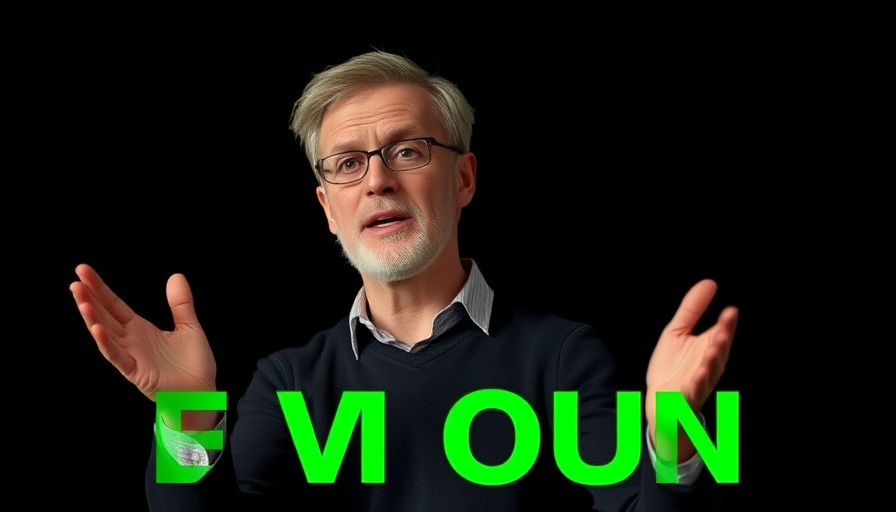
Understanding AI Hallucination: What It Means for Users
The recent revelations from OpenAI regarding the issues of AI hallucinations showcase a critical turning point in our interaction with artificial intelligence. Simply put, hallucinations occur when an AI system confidently presents false information as truth. The concept parallels a student guessing answers on a multiple-choice exam—though frequent guessing may yield occasional correct answers, it fundamentally skews the reliability of the results.
In 'OpenAI Just Exposed GPT-5 Lies More Than You Think, But Can Be Fixed,' the discussion dives into AI hallucinations, exploring key insights that sparked deeper analysis on our end.
OpenAI ran comprehensive tests comparing older and newer models, revealing a disturbing trend. For instance, while one older model scored 24% on accuracy, it had an error rate of 75%. Its counterpart, a newer variant designed for more thoughtful response mechanisms, abstained from answering 52% of the time yet produced significantly fewer hallucinations. This trade-off emphasizes a complex dilemma within AI training methods: current evaluation metrics tend to reward those that take risks with answers, rather than fostering systems that admit uncertainty.
The Need for Change in Training Algorithms
If we are to expect AI systems that yield accurate information, reforms in how these models are evaluated are essential. OpenAI proposes a robust solution: penalizing incorrect answers more heavily than silence, alongside granting partial credit for expressing uncertainty. This notion is not far-fetched; standardized testing has long employed similar tactics to dissuade unqualified guessing. Without similar developments within AI, the prevalence of confident inaccuracies will only multiply, further clouding trust in digital information sources.
The Cultural Impact of AI Inaccuracies
The implications of AI hallucinations ripple through society in profound ways. OpenAI’s CEO, Sam Altman, recently expressed a sentiment of distrust in the authenticity of social media content, illustrating a wider concern about the increasing blend of human and AI communication. As AI systems mimic human speech patterns, the distinction between human and machine-generated content increasingly blurs, raising existential questions about the nature of trust
Organizations that rely upon AI-generated content, such as news agencies and social networking platforms, stand at a crossroads. As engagement with AI technology grows, the ability for users to discern fact from fiction becomes critical. The landscape of misinformation is exacerbated by the presence of bots; recent studies estimate that over 50% of web traffic now consists of bots, complicating efforts to maintain information integrity.
Looking Ahead: What Is in Store for AI Technology?
AI models like GPT-5 may show progress in reducing hallucinations—reportedly producing 46% fewer than their predecessors. Yet, inaccuracies remain a significant issue, with studies indicating that ChatGPT still spreads falsehoods approximately 40% of the time. This statistic highlights that while improvements exist, the journey toward truly dependable AI accuracy is ongoing.
As AI technology evolves, stakeholders—from developers to everyday users—need to recognize both the promise and perils of such advancements. Cultivating systems that prioritize honesty and accuracy over mere confident delivery is paramount for fostering a progressively reliable digital ecosystem.
Actionable Insights for Navigating the AI Landscape
For the growing cohort of individuals keen on leveraging AI without falling prey to misinformation, understanding the nuances of AI capabilities is vital. As a proactive step, one can familiarize oneself with AI model limitations, especially regarding verification—never take an AI response at face value without further validation. Actively engaging in discussions about the ethical development of AI systems can empower users to advocate for change that prioritizes accurate information dissemination.
In closing, the revelations stemming from OpenAI's latest research underscore the delicate balance between innovation and responsibility in technology. The future trajectory of AI will not only affect technical realms but will influence societal narratives at large, necessitating a vigilant and informed user base.
We challenge you, as an eager AI enthusiast, to explore more about these developments and advocate for a future of transparent, trustworthy AI. Subscribe to updates and stay informed about cutting-edge AI technologies.
 Add Row
Add Row  Add
Add 




Write A Comment